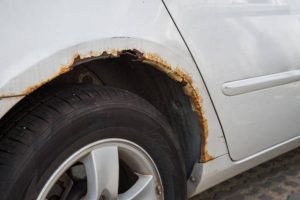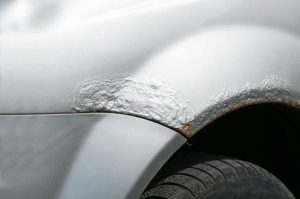A rusting automobile is a frightening sight. It can be too late once you notice the first indications of rust. When rust gets out of control, you’re left with little alternative but to junk your car because continuing to drive it would be dangerous and unlawful. You want to stop vehicle corrosion from getting worse because of this.
Taking care of the rust that is already on your car is the greatest method to stop it from getting worse. To repair the region, a variety of sanders, fillers, primers, and colored paints should be used. It’s much less probable that the rust will spread to the remainder of your car once it has been removed and covered up.
I’ll demonstrate how to do that in this manual. There are a few methods used by professional detailers to get rid of and lessen the effects of rust on an automobile. I’ll demonstrate these methods for you if you keep reading.
Rust: How Does It Begin?
In reality, rust is a chemical reaction. Because oxygen reacts with metal when there is water present, it is also known as oxidation. These three substances come together to form iron oxide.
You are pretty familiar with rust if you have ever visited an outdated playground. But it’s a touch deceptive. Despite the fact that rust may be found almost anywhere, it is a hazardous material.
Rust is a chemical reaction that eats away at the metal, not just a sleeve that develops on top of it. Iron oxide can only be produced when metal is given up.
Remember that if there is surface rust present, there may be considerably more rust concealed on the opposite side of the metal panel. To determine how much rust there is, it is best to remove internal panels if necessary.
Growing up, my friend had a trampoline that was never covered. We discovered all the springs were corroded over one day. One of the springs broke in half as he squeezed it while holding it. That is due to the fact that rust had hollowed out and eaten away at the original metal.
Any time metal is exposed to oxygen and water, rust develops. In essence, rust can happen to any metal outside that isn’t covered.
What Is Rust So Bad For?
Vehicles are silently killed by rust. Many old farm trucks end up rusting, and the rust will weaken the structure. Rust is something that auto inspectors are trained to search for and assess for structural damage. Your automobile will fail the inspection if there is enough rust, and it will no longer be a street-legal vehicle.
Rust’s scientific basis is terrifying. The substance that appears to be new on top of your car is actually the consequence of the metal corroding away. Your car’s metal literally eats away from the rust, leaving holes.

It Harms Your Framework Dangerously
Your car’s safety may be at jeopardy if one of these holes reaches the frame. When it comes to designed buildings, a hole is a big no-no, and cars are no exception.
Rust also has the drawback of being difficult to stop once it has begun. Nothing is slowed down if you simply use your hand to remove the rust. Rust will keep growing and eating away at the metal.
Rust has the ability to completely degrade metal until there is nothing left, in the appropriate (or incorrect) circumstances. The only thing holding your automobile together and keeping you alive in a collision is its frame.
The Top 4 Ways to Stop Rust From Spreading – Vehicle
1. Rust Eliminator
Rust Remover is safe to use on whatever surface you choose to prevent rusting and to stop it from spreading because it contains no forms of acids. Because of its quick-acting nature, you may apply it, wait while it penetrates, and then use some regular water to remove all the oxidation. There is no doubt that this takes much less time and human labor than grinding or sanding. Additionally, it is really effective, so there isn’t really a better option.
2. The Do-It-Myself Approach
Here is a good method to utilize if you don’t have any rust-inhibiting products at home but are desperate to stop the rusting, so it won’t spread. This won’t actually work on a large area of corrosion on your car; it will only work on a small, targeted region of corrosion. First, take some sandpaper and gently file away the oxidation without touching the solid metal beneath. After cleaning up all the minuscule debris, dampen a cloth and use it to wipe the area down. Once a corrosion-inhibiting primer has been applied, you can simply spray paint the afflicted area with a color that matches the original color of your car after it has dried.
3. Recurrent Upkeep
To stop oxidation from spreading, it can be highly beneficial to undertake some standard maintenance on your car on a regular basis. You should take the time to wash your automobile and make sure to get rid of any collected dirt below the car, especially after it has been exposed to precipitation, such as rain or snow. As these are common places for water accumulation, you should also remove any water that accumulates at the drain holes on door bottoms and rocker panels.

4. Rust Scale Removal
After the initial oxidation has progressed and created a bubble, scale rusting develops. The bubble will eventually flake away to reveal additional metal surface. If left unattended, the process will spread to every exposed surface on your car, resulting in rust. Use a wire brush to remove it, a grinding wheel to smooth off the rough surface, and sandpaper to obtain a smooth surface to halt this development in its tracks. To thoroughly cover the spot, use a primer and a coat of paint that matches it.
